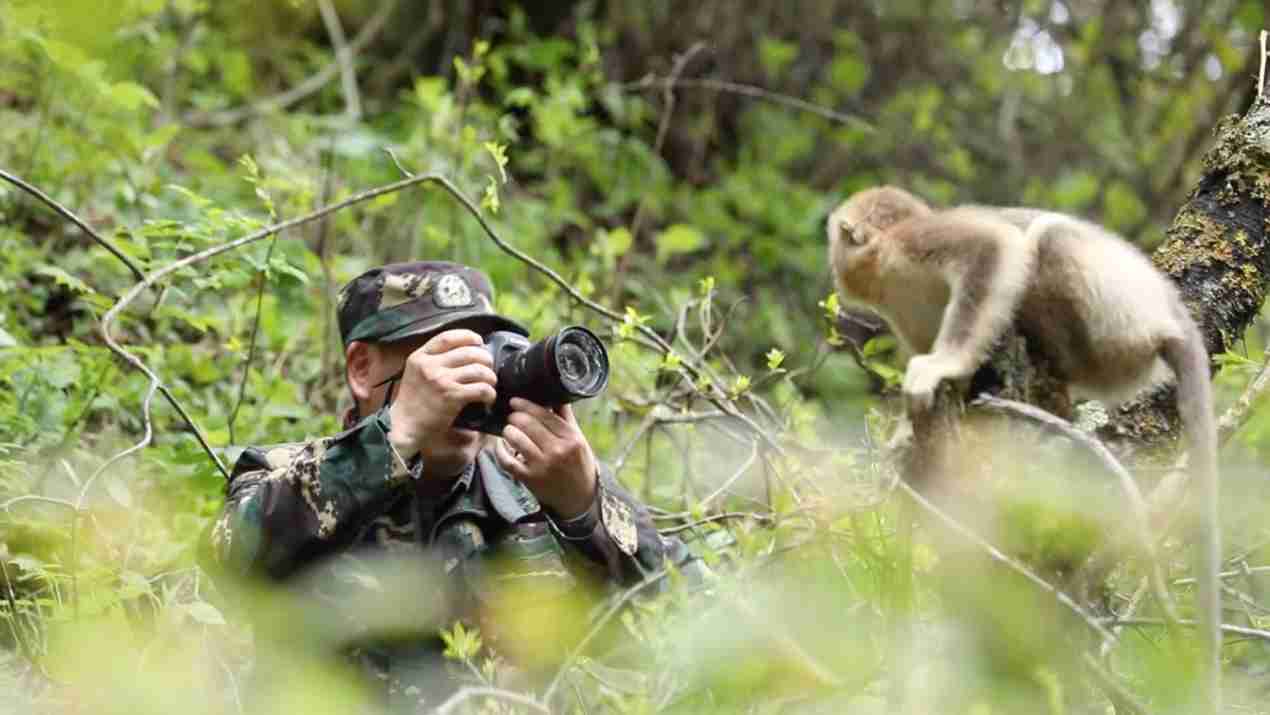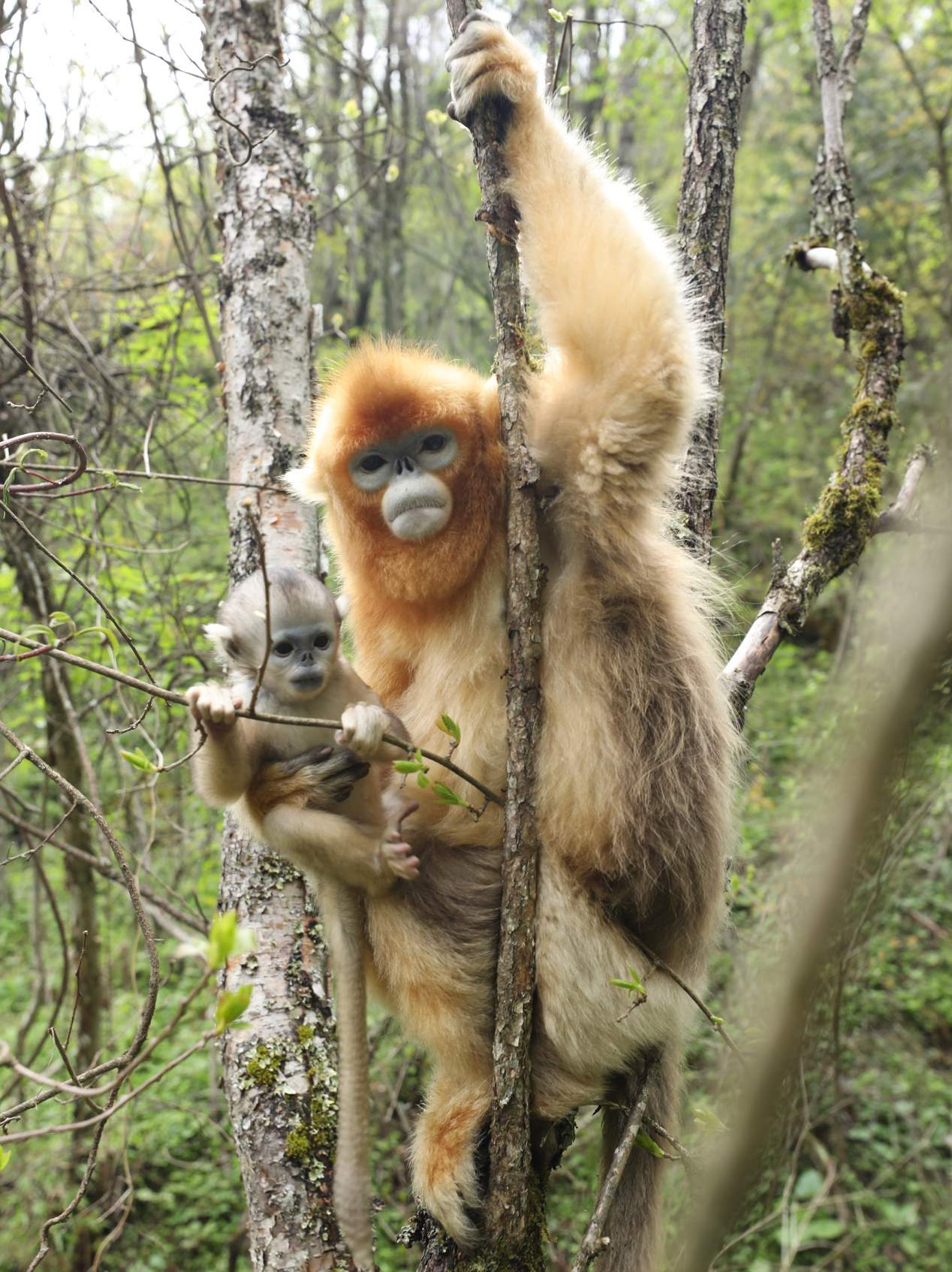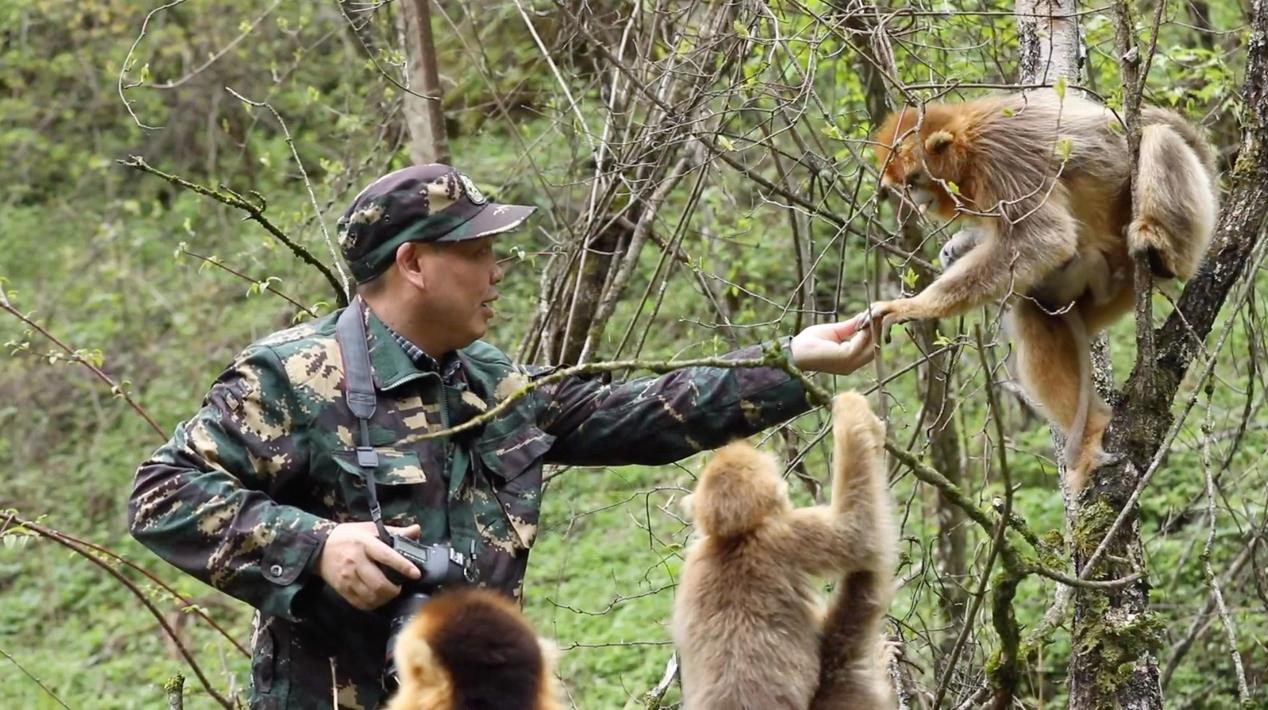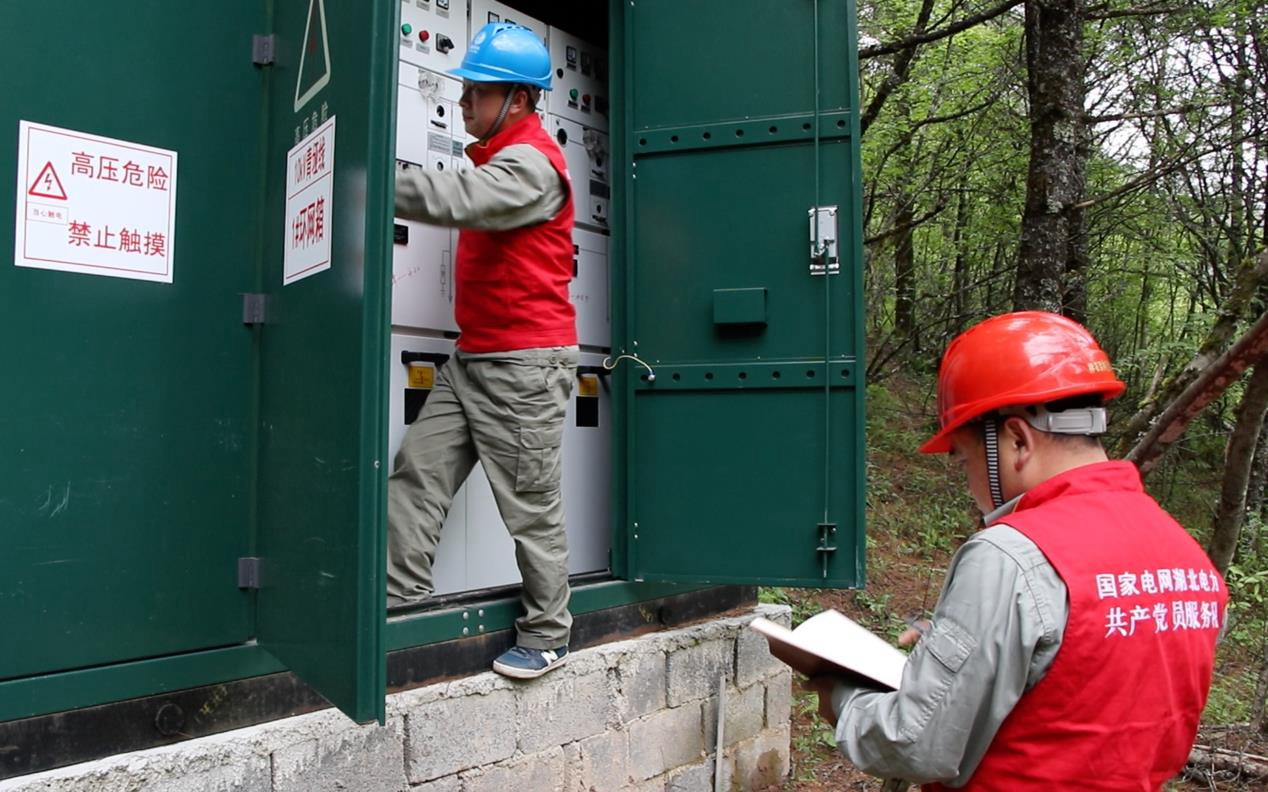
Animal
16:24, 23-May-2019
Returning golden snub-nosed monkeys home after rampant deforestation
Updated
21:48, 23-May-2019
By Zhao Yunfei
02:22

The high altitude of the mountains in central China's Shennongjia forestry provides ideal living conditions for golden snub-nosed monkeys. However, human overconsumption in the 1960s has put the species in danger. Since then, there have been efforts to restore the monkeys' living environment.
Monitoring the monkeys in the Shennongjia area is a daily routine for Yang Jingyuan and his patrol team. The team gets up in the early morning to accurately locate the monkeys in the wild.
“This is the simplest way to keep track of the number of monkeys and their health conditions,” said Yang, head of the scientific academy at the national park.
The golden snub-nosed monkey, also known as the Sichuan snub-nosed monkey, has a light blue face and thick lips. It is under first-class state protection in China.

Golden snub-nosed monkey is under first-class state protection in China. /CGTN Photo
Golden snub-nosed monkey is under first-class state protection in China. /CGTN Photo
They like to eat leaves and flowers. But most of the ones in the forestry prefer apples and peanuts.
Their new eating habits were cultivated by locals. It helps the monkeys get through the winter when food is
scarce in the wild.
“During the winter time, the monkeys can hardly find anything to eat when they are out there in the mountains. We feed them with peanuts. That's why they all love this snack,” Yang said.
Local people say the best way to identify whether a monkey has ever lived in Shennongjia is to see if it accepts peanuts from humans.

Yang Jingyuan is feeding monkeys with peanuts. /CGTN Photo
Yang Jingyuan is feeding monkeys with peanuts. /CGTN Photo
However, the monkey watchers try not to disturb the animals' habit, except when they find an injured monkey and take it to a rescue station.
The number of golden snub-nosed monkeys in the Shennongjia area has increased from 500 to 1,300 in the past three decades. The animals there are no longer afraid of humans thanks to the persistent efforts of the patrollers.
“Usually, wild monkeys choose to stay away from people. But our frequent interaction with the monkeys here has enabled us to stay close to them so that we can know them better,” said Huang Tianpeng, a patroller at Shennongjia's golden snub-nosed monkey study center.
The golden snub-nosed monkey was first spotted in the Shennongjia area in the late 1970s during a mission to uncover the myth of wild men. The discovery of the monkeys stopped the rampant deforestation in the area.
Since then, the authorities have implemented protection measures.

State Grid is constructing an underground power grid to protect wild monkeys from touching exposed wires. /Courtesy of Shennongjia Newspaper
State Grid is constructing an underground power grid to protect wild monkeys from touching exposed wires. /Courtesy of Shennongjia Newspaper
“These protective projects have removed human activities from the areas where monkeys live. Gradually, the living conditions of the monkeys have improved, and the total number of the species has increased,” Yang said.
Nevertheless, there are more that has to be done. Yang said that so far, there are multiple administrative divisions taking charge of all the protective policies. To provide a better environment, more cross-district cooperation is needed.
To learn more about Shennongjia's golden snub-nosed monkeys, please watch CGTN's livestream at https://news.cgtn.com/news/3d55444d7851545a326c4754/index.html
CGTN's Meng Mingwei and Yuan Xinliang also contributed to the story.
(If you want to contribute and have specific expertise, please contact us at nature@cgtn.com.)

SITEMAP
Copyright © 2018 CGTN. Beijing ICP prepared NO.16065310-3
Copyright © 2018 CGTN. Beijing ICP prepared NO.16065310-3